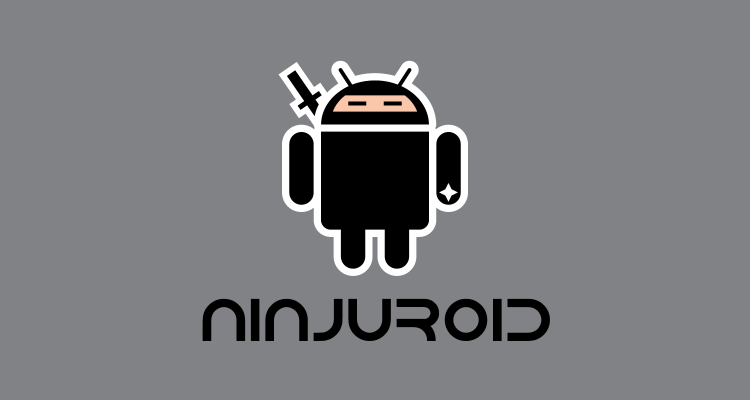1. Android#
Android is indeed popular among smartphone users, data[1] shows that Android is ranked first for the most smartphone users. However, most people don’t know that by using Android, are we using Linux?
This article thoroughly explores the structure of Android, the similarities with desktop Linux, and to what extent Android can be called “Linux”.
Android uses the Linux kernel, can Android be called a Linux distribution?
introduction
It is true that the Linux Kernel is the foundation of Android.But Android cannot be called a Linux distribution, because the main difference in the upper layer of the user system and the runtime environment which is very different from the Linux distribution:
- The Linux kernel handles several tasks such as memory management, task scheduler, and hardware drivers.
- However, in Android, this kernel gets some special modifications. such as Binder, wakelocks, ashmem, and others.
Differences in User Space
the difference
Linux is built on a kernel with glibc GNU coreutils, Shell likebash, Desktop Environment like GNOME or KDE. While Android uses:- Bionic as a standard
Clibrary (instead of glibc), lighter and BSD-licensed - ART/Dalvik as Android runtime, not native ELF executable like in desktop Linux
- No X11 atau Wayland for GUI Android uses a UI framework on top of a mobile-specific window server. The result? Linux desktop applications will not run directly on Android. Because it runs through the runtime, Android Runtime (ART) or Dalvik (in older versions) to run the application, not the execution environment used in Linux desktop, not Linux libraries.
- Bionic as a standard
2. Android Is Not a Linux Distro#
The statement “Android is Linux” actually refers to the same kernel (Linux), not the entire system. In technical terms:
Ekosistem Aplikasi & Model Pengembangan
ekosistem
Android has a Hardware Abstraction Layer (HAL) to allow developers to access hardware consistently. This is different from desktop Linux, which relies on kernel drivers and user software for hardware integration.Android apps are built as
.apkpackages and run on ART/Dalvik, not as Linux binaries like.debor.rpm. Application licensing, lifecycle, and UI interactions are all built within the custom Android framework:- Runtime and library: Bionic + ART/Dalvik
- Utilities: Toolbox/Toybox, not GNU coreutils
- Graphical User Interface (GUI): **Native Android UI**, not X window system This means that Android is not Linux as such, it is a separate platform built on a customized Linux kernel.
Latest Android
android16
Android's latest kernel, also basically uses the foundation of the Linux kernel version 6.x, which is modified for devices.At the time of this article, Android 16, which is scheduled for full release in late 2025, still uses the Linux kernel as the main foundation. However, Google is now more aggressive in developing the Android Generic Kernel Image (GKI) and implementing kernel modularization, which makes the Android kernel more different from Desktop Linux.
3. Android Security#
Some Android patches have returned to the main Linux kernel, especially hardware drivers and other important modules. But so many features have been retained as Google proprietary patches, making Android a distinct evolution making it a standalone Operating System despite sharing its kernel with Linux.
Android Partially Contributes Back to Kernel
ecosystem
Although not all contributed changes are merge back into the main Linux kernel, the Android community still contributes to the Linux Kernel ecosystem, especially in terms of hardware support and security patches:
- Kernel dari Linux memberikan banyak fitur keamanan
- SELinux diaktifkan secara default untuk membatasi akses
- APK memiliki permissions model di aplikasi
- Private Compute Core di Android 12 ke atas untuk isolasi data sensitif
Vulnerablity
risk
Some vulnerabilities such as Dirty COW can still threaten older AndroidsInformation on actively exploited vulnerabilities since at least October 2016. shows that it is still vulnerable to Vulnerabilities have existed in the Linux kernel since version 2.6.22 released in September 2007
The vulnerability has been patched on Linux kernel versions 4.8.3, 4.7.9, 4.4.26 and later. This means that most of them before 4.8.3 are still vulnerable to the Dirty COW vulnerablity.Device CheckChecking the Kernel on Xiaomi Redmi Note 14 (Tanzanite) Device
My kernel version is 5.10.209. most of Android is now above kernel version 4.x, unless you have an old device. and at least the kernel is still below version 4.8.3, it does not rule out the possibility that the Dirty COW vulnerability..jpg)
.jpg)
Conclusion#
Although Android is not a Linux distribution Android is an Operating System that is based on a modified Linux Kernel:
- Kernel: Same Linux kernel (with Android-specific patches)
- Library: Bionic not glibc
- Runtime: ART/Dalvik, not ELF binary
- Utilitas & GUI: Toolbox + Android UI, not the default GNU/Linux desktop
- Function & target: Mobile devices, not PCs
So, when people say “Android is Linux”, that mean that only the kernel uses the Linux kernel. The rest are fundamental differences in architecture and other components on top of the kernel. Understand this structure so that we don’t mistakenly discuss Android apps or security as if it were a desktop Linux distro.
References#
- Android Developers – Platform Architecture (Linux kernel, HAL, ART)
- Kernel - Android System Programming [Book]
- Controversy about whether Android is Linux or not.
- Notes on Android Architecture
- Bionic (software) - Wikipedia
- Chapter I - Introduction - The Evolution of Android’s Architecture
- Platform Architecture | Android Developers
- Forbes (via Quora) – Kernel changes in Android
- Wikipedia – ART, Dalvik
- Wired – Linux and Android code merge
- Wikipedia – Dirty COW vulnerability
FAQ#
Is Android Linux?
Yes and no. Android uses the Linux kernel as a foundation, but it doesn’t use the typical components of Linux distributions such as glibc, systemd, or X11/Wayland. Android also uses Bionic as its libc and ART as its runtime, making it very different from typical Linux distros.
Why Android is not called a regular Linux distro?
Because Android does not run the standard Linux userland. It does not use the bash shell by default, there is no glibc, and the main interface is not the X11/Wayland GUI, but based on Java/Kotlin and ART.
Can Android be used like Linux Desktop?
By default it can’t. However, with root device access or tools like Termux, Linux Deploy, or proot, Android can run Linux environments (like Arch, Ubuntu). However, this is limited and not the same as a native desktop experience.

